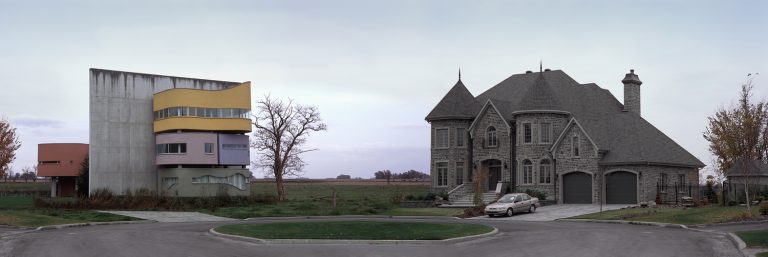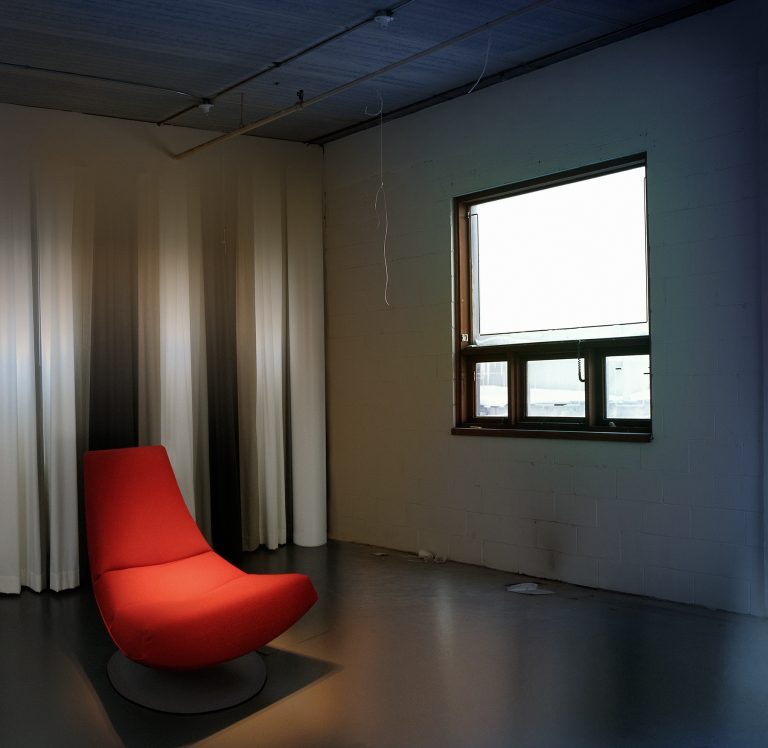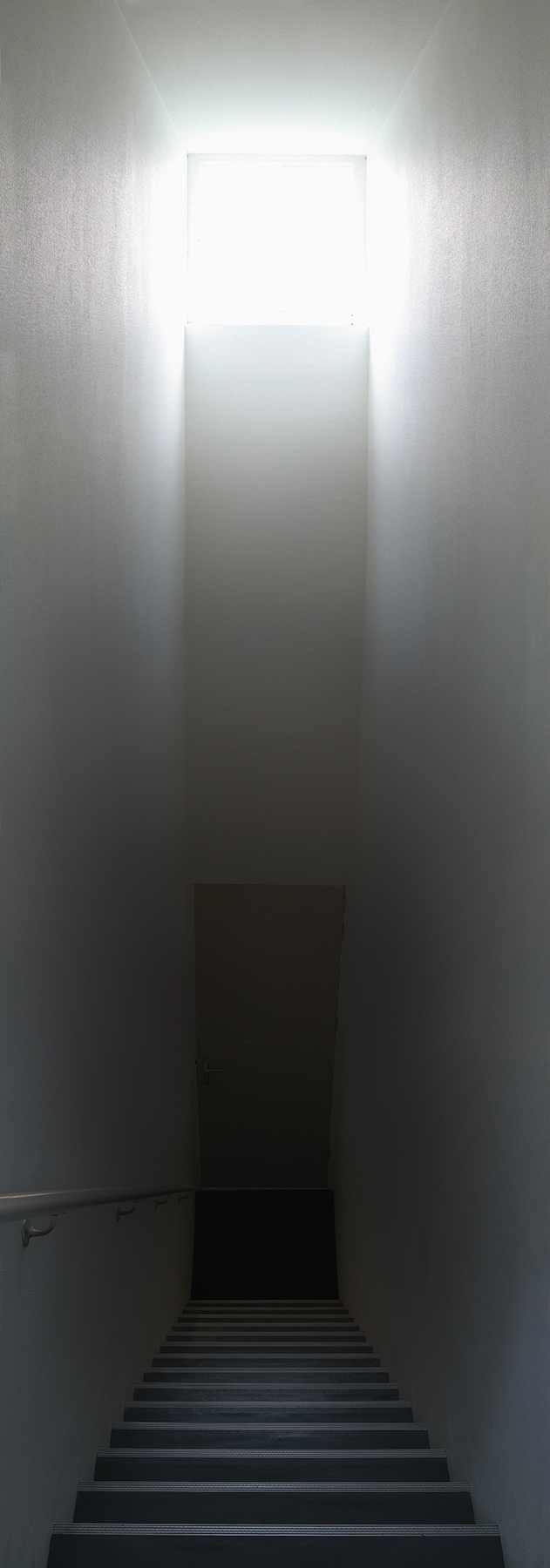To be there, over there
outside of oneself
2006 – 2007
‘To fabricate a house – to make an illusion’: that is what John Hejduk wrote in large letters in 1973 underneath one of the drawings for Wall House 2, also known as the Bye House. He signed the design ‘Hejduk Fabricator’. (1)
You should bring the devils into your own house as a way to challenge both society and one deep held assumptions. (2)
The house is an artefact in our own image. John Hejduk’s house projects — his architectures, but also his many drawings and poems — go far beyond this dimension, even to the extent of evoking the tragedy of life itself. This vision is remarkably well embodied in the Wall Houses, whose very design demonstrates an ontological questioning. The Wall Houses develop a notion of subjective architecture in which the functional meets the symbolic. Through the theatricalization of architectural events, the three houses in this series seem to be invested with narrative and a vital anthropomorphism. The dwelling becomes a place of reflection and meditation on existence, like a sanctuary.
In the Wall House period of John Hejduk’s work, the architectural forms appear contracted in space and turned outward, or extruded. Whereas before they seemed restrained by an enveloping and closed structure, they now float freely, forming an exterior relief, like vital organs emerging from their matrix. The dwelling stands outside of itself, endowing it with a kind of transparency. Through a process of folding out and opening up, it is transformed into a surface of contact, thereby endowing what was once an interior limit with the potential for relations with the outside environment. The wall is a symbol that has strong connotation in the Western imagination and its representations are often associated with negative affects. Walls are usually elements that close things, cut off access, mark possession, hide and render opaque. Symbolically and metaphorically, one can see in Wall House #2 a reversal of these negative realities in favour of a meeting with the other.
Using these reflections as my springboard, I created a series of images that seek to establish a resonance with the thinking of John Hejduk and especially with his conception of architecture as part of the ‘social contract’. Some of my images explore poetic aspects, others develop political points of view.
Wall House #2 was intended to be constructed in Ridgefield, Connecticut, among the trees but was built instead in a recent housing development in Groningen, near a lake. It was also made larger than it was originally supposed to be. In my project, I imagined more of these relocations and transformations. Through the use of digital photomontage, I moved the house to a different set of surroundings and manipulated its exteriors and interiors.
In a number of these created settings, John Hejduk’s architecture plays a disruptive role. The house was relocated into improbable contexts where it would have, undoubtedly, been refused admittance. Some images show it in North American gated communities, beside homes sometimes called Monster Houses, or McMansions (3). Its presence within these wealthy communities (widely disparaged by architects and city planners) creates aesthetic, cultural and social confrontations. In other images, its positioning in relation to architectural elements that embody rejection and segregation, particularly urban walls covered with graffiti, morphs into a call for openness and communication. A final image presents the Wall House as an abandoned monument, in the middle of a vacant lot. This image was inspired by my visit to the Villas La Roche et Jeanneret (Le Corbusier, Paris) and the feeling of strangeness that came from seeing modernity age. This ruin, this fabricated decrepitude, seems to awake a future nostalgia, of the type perhaps that accompanies the end of any aesthetic utopia.
1) Van der Bergh, Wim – “A fabricated illusion”, Archis magazine for Architecture, The Archis Foundation, The Netherlands, 2001.
2) Hays, K. Michael – Sanctuaries: The Last Works of John Hejduk, Whitney Museum of American Art, New-York, Unpaginated, 2002.
3) McMansion is a slang architectural term which first came into use in the United States during the 1980s as a pejorative description and an idiom. It describes a particular style of housing that—as its name suggests—is both large like a mansion and as generic and culturally ubiquitous as McDonald’s fast food restaurants.
12 large format images. A residency project at the Wall House #2, commissioned by Noorderlicht Photography and the Wall House #2 Foundation, Groningen, Holland








